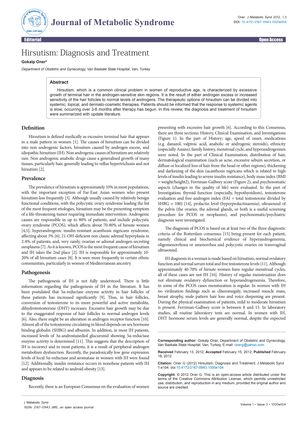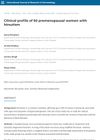Hirsutism: Diagnosis and Treatment
January 2012
in “
Journal of metabolic syndrome
”
hirsutism androgen excess PCOS oral contraceptives antiandrogens spironolactone cyproterone acetate finasteride flutamide bicalutamide drospirenone insulin-sensitizing drugs GnRH agonists N-acetyl-cysteine topical treatments mechanical hair removal polycystic ovary syndrome birth control pills Propecia

TLDR The document concludes that hirsutism can be managed with various treatments tailored to the individual, potentially improving quality of life.
The document from 2012 reviews the diagnosis and treatment of hirsutism, a condition of excessive hair growth affecting about 10% of women, primarily due to androgen excess with PCOS being the most common cause. It outlines various treatment options, including systemic agents like oral contraceptives and antiandrogens, which can take several months to show effects, and topical and mechanical methods. Medications such as spironolactone, cyproterone acetate, finasteride, flutamide, bicalutamide, and drospirenone are discussed, each with their own effectiveness and potential side effects. Insulin-sensitizing drugs and GnRH agonists show limited improvement, while N-acetyl-cysteine has been shown to decrease hirsutism scores. Topical treatments and mechanical hair removal methods are also considered. The document emphasizes the importance of tailoring treatment to individual needs and highlights the potential for significant quality of life improvement with appropriate management.
